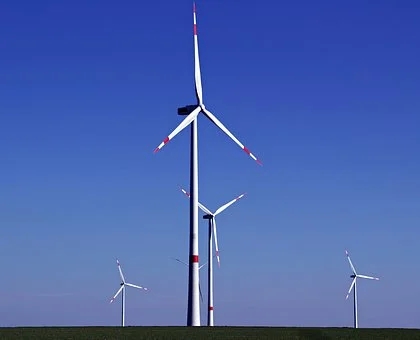
Next year will be the last year for offshore wind power to "rush to install". Where will offshore wind power go? At the "Energy Transition China Forum" held by the market research organization Wood Mackenzie a few days ago, some industry analysts pointed out that despite the current challenges, the prospects for offshore wind power in the next 10 years are still very impressive, which also requires more offshore wind power. Fast cost reduction speed to achieve parity.
Offshore wind power will continue to grow rapidlyIn recent years, affected by the changes in electricity price subsidy policies, my country's offshore wind power installed capacity has experienced a rapid rise. According to data released by the Global Wind Energy Council (GWEC), in 2019, my country’s newly installed offshore wind power accounted for 40% of the global total, reaching a record 2.4 GW, a year-on-year increase of nearly 51%, and the ranking has jumped to the top World number one.
From the perspective of the industry, despite the cancellation of central subsidies, the continued growth trend of my country's offshore wind power will not change. According to data recently released by Wood Mackenzie, the current capacity of my country's offshore wind power reserve projects has exceeded 80 GW. Analysis believes that this huge data will provide strong support for the development of my country's offshore wind power market in the next 10 years.
In terms of regional distribution, Jiangsu, Guangdong, Fujian and other coastal areas are the "main force" for the development of my country's offshore wind power market. According to statistics, among the newly installed capacity in 2019, Jiangsu has the largest newly installed offshore wind power capacity, reaching 1.6 GW, while Guangdong and Fujian are close behind with 0.35 GW and 0.2 GW respectively. Judging from the currently approved project capacity, these regions also account for most of my country's offshore wind power market.
Costs may rise in the short term
Despite the broad market prospects, offshore wind power, which is in the “rush to install”, still faces the challenge of high costs. The reporter learned that since last year, in order to ensure the basic income of wind power projects and win the final subsidy window period, the construction of wind power projects in various regions has entered an accelerated phase.
However, the lack of installation capacity caused by "rush to install" continues to plague the offshore wind power industry. For a large number of approved projects under construction, the shortage of installation vessels has been an important factor restricting the completion of offshore wind power projects on schedule. Many people in the industry told reporters that due to short supply, the price of offshore construction has also risen.
A relevant person in charge confessed to reporters that in the short term, there has been an imbalance between supply and demand in the wind power industry. At the same time, this has also created room for enterprises to "make quick money" and stimulated a large number of enterprises with insufficient qualifications to rush to the The sustained and healthy development of the industry brings adverse effects.
"The lack of long-term development goals and the unclear attitude of local governments on subsidy policies after 2021 make developers only focus on short-term benefits, and this status quo has led to short-term cost increases." Wood Mackenzie Advanced Research on China Wind Power Market Advisor Li Xiaoyang said.
The healthy development of the industry is inseparable from a stable policy
According to Wood Mackenzie's prediction, my country's offshore wind power cost per kilowatt-hour is expected to drop by 42% in the next 10 years. The analysis pointed out that the cost pressure on developers caused by the cancellation of subsidies will prompt a significant reduction in the cost of offshore wind power construction. At the same time, the application of large-scale offshore wind turbines with a capacity of 6-8 MW will also help reduce construction costs and increase power generation.
According to industry insiders, "parity" is far from the "end point" for cost reduction of offshore wind power. In an increasingly market-oriented power system, offshore wind power needs to compete with other conventional energy sources. To achieve this goal, the offshore wind power industry still faces many challenges.
Zhang Kaihua, the executive deputy general manager of a company, once emphasized in an industry conference that stable policy guidance is particularly important for the future development of offshore wind power. He pointed out that parity is a "hurdle" that must be crossed by offshore wind power, which requires the cooperation of relevant government departments and the entire industry chain. At the same time, to achieve high-reliability development, the offshore wind power industry requires both policy stability and more market-oriented competition, clarification of installation targets and resolution of consumption and other issues.
Li Xiaoyang believes that after 2021, continuous policy support and subsidy support are essential for the sustainable development of offshore wind power and rapid cost reduction. "A healthy cost reduction also requires sufficient market capacity to support. If only relying on the internal digestion of the industry or the reduction in construction costs caused by vicious competition, it will bring more hidden dangers to the operation of the wind farm during the life cycle, and may lead to operation and maintenance. The cost has risen sharply."
















 RCCN WeChat QrCode
RCCN WeChat QrCode Mobile WebSite
Mobile WebSite